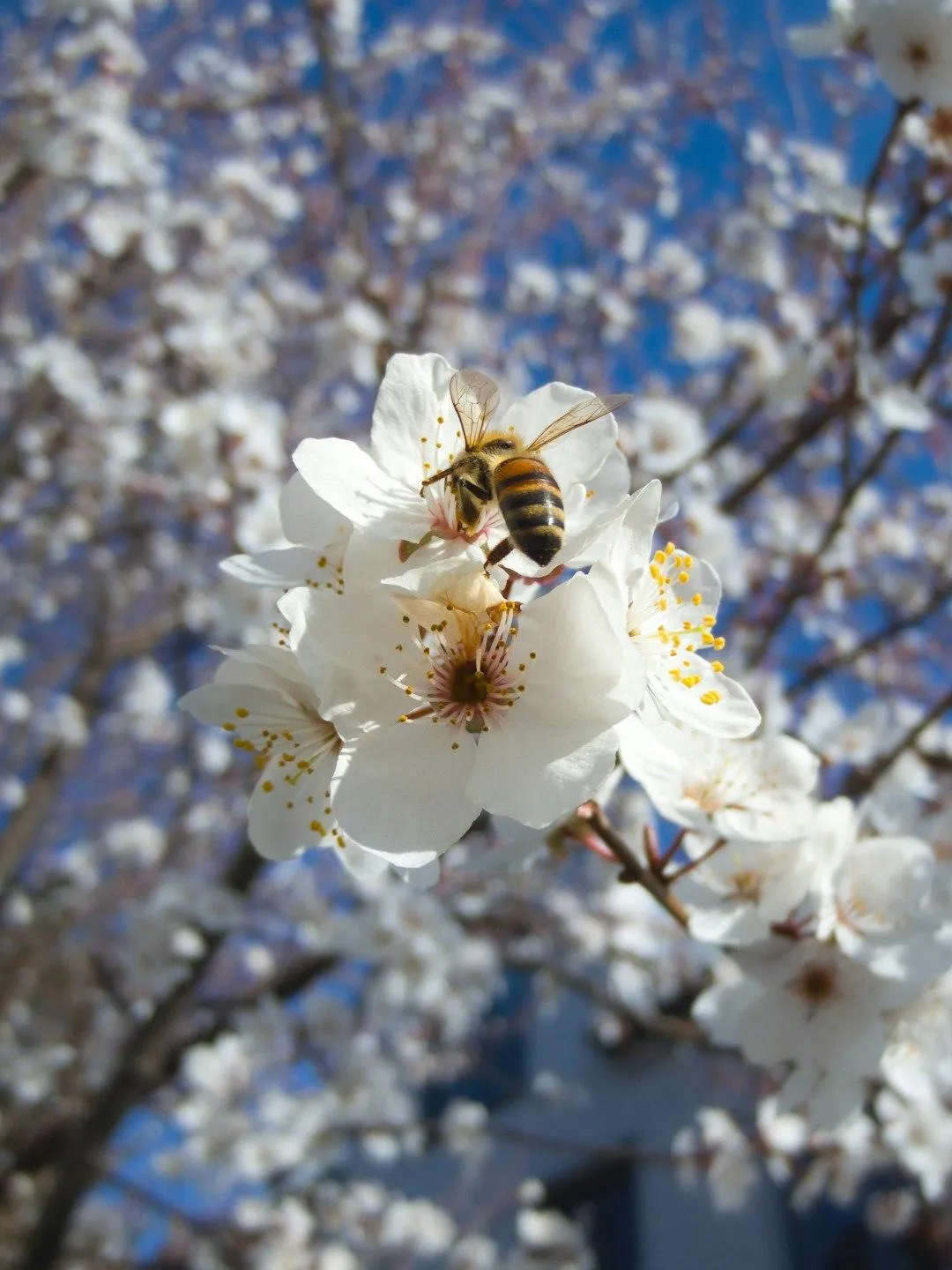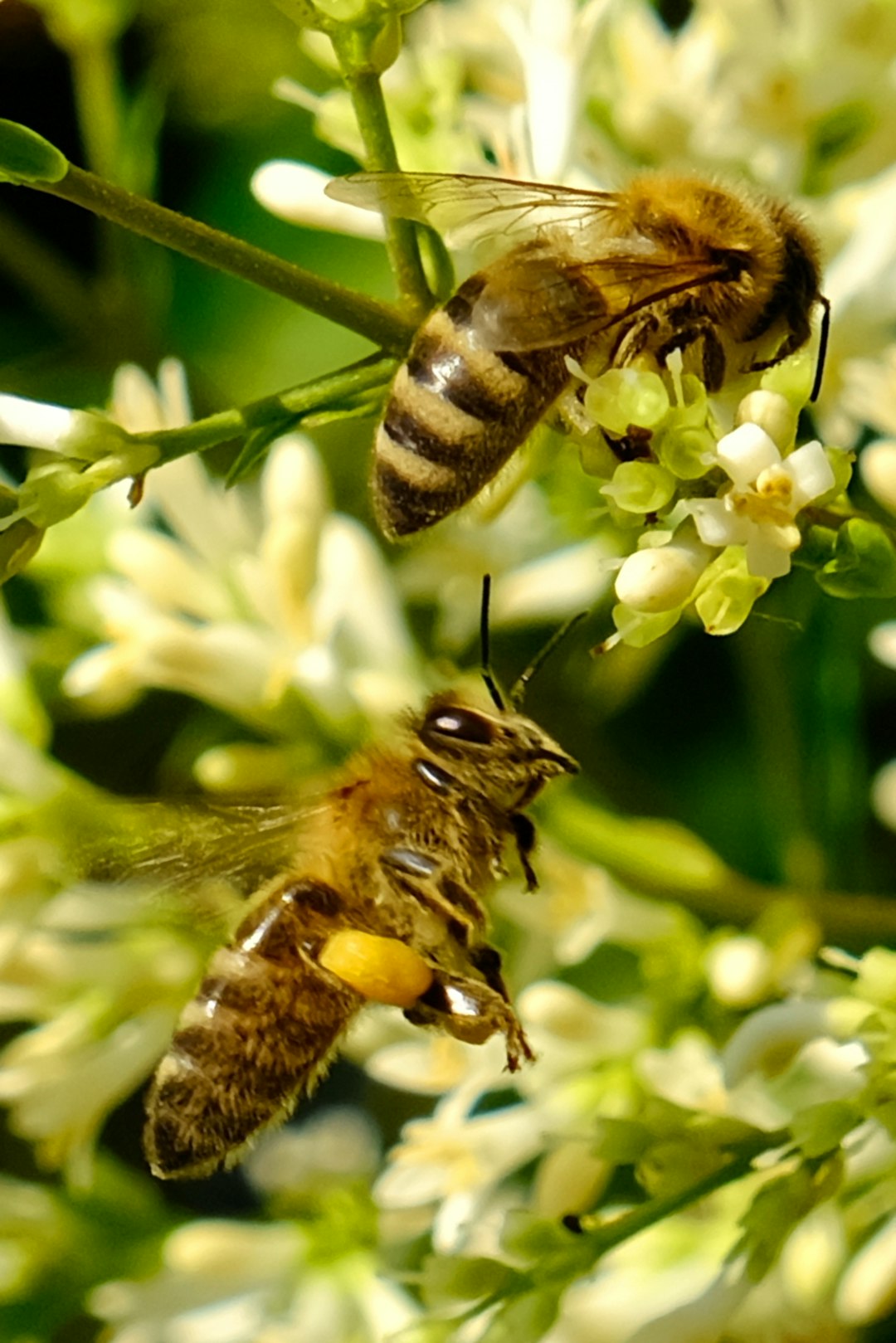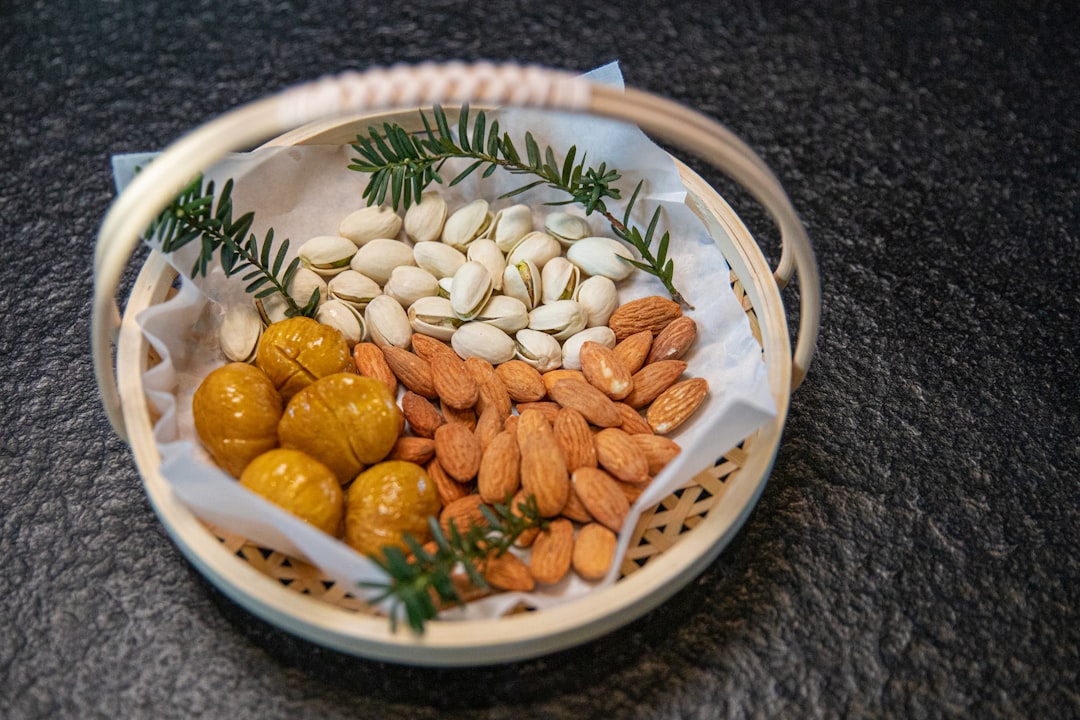
Spring Sneezes: Unraveling Allergy Mechanisms and How to Breathe Easy!
Spring Sneezes: Unraveling Allergy Mechanisms and How to Breathe Easy!
By Evelyn Le, ND, MPH, FAIHM

Yay, Spring is here. Hope you enjoy many blossoming flowers and beautiful trees. For many people, it’s a great season in the Pacific Northwest to bathe in the sun, but for other people who suffer from allergies, it may not sound as exciting. I hear you. I grew up in a household where my father had a severe allergy, and I think I got it from him. One day, I came home from elementary school and saw a man sitting in the living room with a swollen nose, as if he had just undergone surgery. He was so still and frail that he didn’t move. I stared at him, terrified, and ran as fast as I could to find my mom. I asked curiously, “Who’s he, Mom?” “Your dad. You did not recognize him?” Mom replied. That’s the first time I realized surgery can really change the way people look. My father blows his nose every time spring comes. So loud that we kids would imitate his sound.
Later, I learned that he may be allergic to dust, as well as dander from dogs and cats, and air pollution. The ENT doctor performed a CT scan of the sinuses and found nasal narrowing, which is why he often experiences nasal congestion. Eventually, they recommended nasal surgery to open up the deviated septum. The bottom line is that when you experience allergy symptoms, please consult with a primary care practitioner, an allergist, or an ENT doctor.
When we refer to an allergy, we mean that the immune system reacts to a foreign substance that enters the body, also known as an allergen. They could be pet hairs, food, environmental factors, air pollutants, or medications, among others. A cascade of reactions leads to the release of histamine, thereby causing allergy symptoms. Our body can tolerate a certain level of histamine reaction until it reaches its limit.
Imagine when was the last time a bee or a wasp bit you? How did you feel? That is an insect sting allergy. Some people experience a sting and then recover, but others may develop giant hives, brain fog, rashes, throat constriction, and swelling in the mouth and eyes to the point of anaphylaxis that they need EpiPen. Some people told me that they felt mildly itchy at night when they sleep, which could be due to the texture of their cover or blanket, new detergent, shampoo, or body wash, or even makeup remover. Some people feel worse with heat, cold, dry, or humid climates. Histamine level is an individual thing. Everybody has different tolerances.
Food allergy can cause tingling in the mouth, swelling of the lips, tongue, face, or throat, hives, stuffy nose, stomach cramps, and/or anaphylaxis. As we are collectively part of a community, whether in work, school, or public spaces, awareness about food contamination and advocacy for personal choices with respect and care are common practices to prevent allergic reactions,
Most people report experiencing sneezing, watery eyes, itchy skin, a stuffy nose, and fatigue when they have hay fever, also known as allergic rhinitis. An over-the-counter antihistamine is either an H1 or H2 blocker. H1 antihistamines like Diphenhydramine (Benadryl), Brompheniramine (Dimetane), etc., are used to treat allergies caused by pollen and pet dander. H2 antihistamines, such as Famotidine (Pepcid) and cimetidine (Tagamet), are commonly used to treat peptic ulcer disease, gastroesophageal reflux disease (GERD), acid reflux, and indigestion.
Natural anti-histamines, such as quercetin, are flavonoid antioxidants that scavenger free radicals to stabilize the cell membranes of mast cells. It prevents immune cells from releasing histamines, thus reducing allergic symptoms (1). You would see many supplements include the combination of stinging nettle, Vitamin C, butterbur, and bromelain. Vitamin C from citrus, leafy greens, and berries is a potent antioxidant to boost your immune function. Stinging nettle originates from Asia and Western Northern Africa and helps reduce inflammatory particles in the body, thus reducing allergy symptoms caused by ragweed or sweet vernal grass (2).
Bromelain is the active compound in pineapples that was found to be effective against sinusitis or a runny nose (3). I often use butterbur for headaches and migraine. However, butterbur is also safe and effective option for seasonal allergic rhinitis (4).
You can get tested for environmental allergies at primary care office or allergy clinics such as Allergy Easy skin prick, and we test for 60 different environmental allergens such as grass, cockroach, dust, mite, dandelion, horse, dog, cat dander, wheat, etc. As a result, you will receive sublingual immunotherapy with homeopathic drops to help build up your immune function and tolerance to environmental allergies.
Another natural modality is homeopathy, which is rooted in the principle that “like cures like,” meaning substances causing symptoms in a healthy person can, in small doses, treat similar symptoms in a person with allergies. For example, Euphrasia remedy is used for watery, irritated eyes, while Sabadilla for sneezing. Histaminum for pollen, ragweed, mold, dust mites, and pet dander. You would take the homeopathic pellets or tincture orally daily.
A good gut microbiome can help regulate the immune system and reduce allergy symptoms. Yogurt, kefir, sour kraut, kimchi, and kombucha contain a significant amount of natural probiotics that can be consumed to support your microbiome. Studies have shown that people with allergies often have less diverse gut microbiomes compared to those without the condition. A reduced diversity of the gut microbiome can lead to an imbalance, resulting in higher levels of inflammation caused by allergens (5). Eating more than 40 different kinds of plant-based foods per month can help increase microbiome diversity.
Don’t forget the good old Omega-3 found in wild-caught fatty fish, flaxseed, and chia seeds, which can help reduce inflammation and alleviate allergy symptoms. Please choose medical-grade brands that undergo third-party testing, certified by NSF or Consumer Labs. If you are vegan or vegetarian, plant-based omega-3s are derived from kelp, walnuts, flaxseed, chia seeds, hemp seeds, edamame, seaweed, and algae. I have heard the rumor that krill oil is more absorbable compared to fish oil. The truth is you will need double the amount of kril oil compared to fish oil to get similar blood levels of DHA and EPA, components of omega 3 (6).
Carry an EpiPen with you everywhere you go if you have experienced an anaphylaxis reaction before. EpiPen is a brand name. More cost-effective alternatives are a generic Neffy® nasal spray or Adrenaclick® autoinjectors like Epipen. Please consult your doctor before taking any prescription medication.
When people experience severe or chronic allergy symptoms that they don’t respond well to medications or find it difficult to avoid epxosure to specific allergens. The allergist can also provide monthly allergy shot subcutaneously. Similar to homeopathy, it works by gradually exposing your immune system to allergens. The pros are 1) decreasing long-term costs, 2) can treat multiple allergies at once, 3) potentially providing long-term allergy relief. The cons are 1) high up-front costs depending on your insurance, 2) redness, swelling, and tenderness at site of injection, 3) requiring commitment and regular in-office appointments, 4) worsening allergy symptoms at first before getting better. Please consult with your allergy specialist if you are interested.
The last piece of advice is to avoid trigger foods and places that have high concentrations of known allergens.

Histamine and hormones
A 2020 study reported that testosterone has a protective property by decreasing eosinophil, which is associated with a high level of allergy in the body. We measure eosinophil through the complete blood count test via serum blood draw.
In 1998, estrogen and progesterone helped regulate the histamine receptor H1 found in nasal cavities, especially during pregnancy. However, no studies found any hormone replacement with estradiol or progesterone worsening histamine reaction.
I have many men in their andropause and women in their perimenopause, menopause, and post-menopause saying that their watery eyes reaction worsens despite the end of seasonal allergies. This could be because they already have seasonal allergies; adding hormone deficiency makes it worse. Our eyes have two glands: the meibomian and lacrimal glands. The meibomian gland has estrogen and testosterone receptors that help regulate lubrication levels. When we have low hormone levels, the gland dries up and forces the lacrimal gland to increase its tear duct to help moisturize the eyes; thus, watery eyes exist.

Histamine and gut health
I hear many stories from clients that their gut flares up when they experience allergy symptoms. Indeed, histamine is an important chemical that affects gut health in a few ways. One big issue is something called histamine intolerance (HIT), which happens when a person’s body can’t break down histamine properly. Normally, an enzyme called diamine oxidase (DAO) helps get rid of histamine in the gut. But if there isn’t enough DAO, histamine can build up and cause problems like diarrhea, headaches, and skin flushing.
Histamine also helps control the immune system in the gut. It works through four different types of receptors, called H1R through H4R, each playing a special role in managing inflammation and immune responses. For example, the H4 receptor is involved in gut problems like colitis and irritable bowel syndrome (IBS).
Changes in the gut’s natural bacteria, known as the microbiota, can also affect histamine levels. If there’s an imbalance in these bacteria — a condition called dysbiosis — it can lead to more bacteria that produce histamine. This can make histamine intolerance worse, especially in people who already have low DAO levels.
In short, histamine affects gut health by causing intolerance, influencing the immune system, and interacting with gut bacteria. Managing histamine intolerance usually means changing your diet to eat less histamine and sometimes taking DAO supplements to help break it down.

Histamine and brain health
Have you ever experienced when allergy seasons come, your brain starts to feel foggy and can’t quite focus on a certain task? Histamine plays an important role in brain health. It helps with wakefulness, learning, memory, and the growth of new brain cells. Most of the brain’s histamine is made by special cells in a part of the brain called the tuberomammillary nucleus, and these cells send histamine all throughout the brain. Histamine is known for helping people stay awake, pay attention, and think clearly.
Histamine also affects brain inflammation. It controls how certain brain cells, like microglia and astrocytes, respond to inflammation by influencing the release of chemicals that cause swelling. This is important because too much inflammation is linked to diseases like Alzheimer's and Parkinson’s. Scientists are studying histamine to see if it could help treat these brain diseases.
In addition, problems with histamine signaling have been connected to developmental disorders like autism and ADHD. This suggests that histamine plays a key role in brain development and keeping brain circuits healthy.
In short, histamine plays a big role in brain health by affecting wakefulness, thinking, inflammation, and brain development. If histamine levels become too high, it can lead to more brain inflammation. To help lower histamine and support brain health, patients can focus on eating a low-histamine diet, avoiding highly processed foods, managing stress, and supporting gut health with probiotics and healthy foods. Getting enough sleep, staying active, and working to reduce exposure to environmental toxins can also help keep histamine levels balanced. In some cases, natural supplements that support histamine breakdown, like vitamin C and quercetin, may be helpful — but it’s best to talk with a doctor before starting any new supplement. Taking these steps can make a real difference in calming inflammation and protecting long-term brain health.

Histamine and joint health
Histamine also plays an important role in joint health, especially in joint diseases like rheumatoid arthritis (RA) and osteoarthritis (OA). Histamine works by attaching to four types of receptors in the body (called H1R, H2R, H3R, and H4R), and each one affects the immune system and inflammation differently.
In rheumatoid arthritis, histamine helps drive inflammation and joint damage. Research shows that histamine, especially through the H4 receptor, can cause bone to break down by promoting the growth of cells called osteoclasts. Histamine released by immune cells like mast cells can also make joint swelling worse by increasing chemicals that damage cartilage and the lining of the joints.
In osteoarthritis, histamine has been found to cause cartilage cells (chondrocytes) to multiply and produce substances called matrix metalloproteinases (MMPs), like MMP-3 and MMP-13, which break down cartilage. Chondrocytes from people with OA have been shown to have histamine receptors (especially H1R and H2R), meaning histamine plays a role in this disease too.
In short, histamine can cause joint inflammation, bone loss, and cartilage damage in both RA and OA. Reducing histamine’s effects may be helpful for managing these joint problems.
To help lower histamine-related inflammation in the joints, patients can eat a low-histamine diet, reduce processed foods, and focus on an anti-inflammatory diet rich in fresh fruits, vegetables, healthy fats, and omega-3s. Managing stress, improving gut health, and getting regular gentle movement, like walking, stretching, or yoga, can also support joint health. Natural supplements like quercetin, vitamin C, and DAO enzyme support may help lower histamine levels too — but it’s important to work with a doctor before starting new supplements. Taking these steps can ease joint inflammation and support healthier, more comfortable movement.
References:
https://journals.sagepub.com/doi/abs/10.1177/02601060231173732
https://www.europeanreview.org/wp/wp-content/uploads/01-05.pdf
